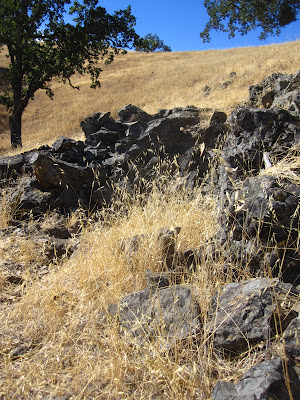Tuesday, October 16, 2012
Sign the Petition to Cancel Rattlesnake Republic
As a rattlesnake researcher, I have found that these animals are much different than the media portrays them to be. For example, many people are unaware that they have docile temperaments, and exhibit maternal care and kin recognition behaviors. Rattlesnakes are also one of the most abundant predators by biomass in their environment, making them an integral part of the ecosystem. Their population declines could have cascading effects, which may drastically change food web dynamics. Thus, it saddens me that an "educational" channel like the Animal Planet would promote the slaughter of such beautiful and important creatures. If you have not already done so, please sign the petition to stop their show, Rattlesnake Republic, which glorifies hunters who kill rattlesnakes for profit. It serves no other purpose than to miseducate the public, propagate fear, and deter conservation efforts on those species currently in decline. Please sign the petition to cancel this show here.
Monday, October 1, 2012
Where the *bleep* are the snakes?!
My life has been crazy busy: finishing up the field season, travelling to Vancouver, and moving to San Diego from Davis. Now that I am finally settling down, I found the time to travel to BORR last weekend to check on the snakes and collect venom (we are collaborating with the Gibbs lab to examine individual and seasonal variation in venom composition). However, after two days of searching, we found ZERO snakes. Zip, nada, nothing! It's not like we were looking for snakes randomly. I have 20 of them with implanted radio-transmitters--this means I can track their exact location. However, after hours of tracking and re-tracking and re-tracking, NONE were on the surface. What the *bleep* are they doing?!
Northern Pacific Rattlesnakes mate bimodally. This means that they have two mating seasons: the spring and the fall. I was hoping to see mating activity last weekend, but instead I saw nothing. However, I did track several females to the exact same burrow as males. I found many male-female pairings and I found one two male-one female cluster. Although I could not see the snakes, I suspect they could be mating in shelter.
I also noticed that most of my snakes were hidden within rocky outcrops. This is strange for my site because there are very few of these. In the summer, snakes mainly hide in abundant squirrel burrows, but I did find that they tended to overwinter in the outcrops. This makes me wonder if they are moving to their overwintering sites early. Normally overwintering ("hibernation") begins in November and lasts through March. Check out the nice outcrops the snakes were in:
One snake in here:
One male and one female shacked up here:
TWO males, one female here:
The weekend wasn't a total loss though. We saw a nice little spider crossing the road and found that one of our females gave birth:
Tarantula!
A little baby outside its den:
Who knows what the snakes were up to? Maybe it was just too hot of a weekend. So much for me collecting venom...
Subscribe to:
Comments (Atom)







